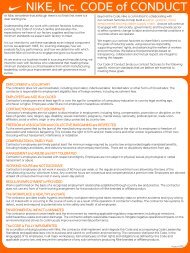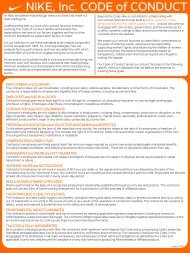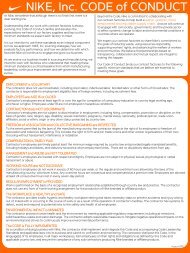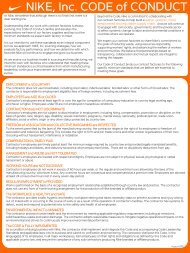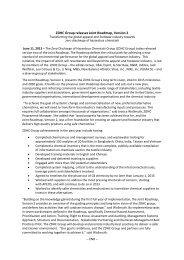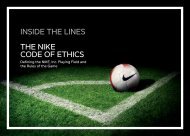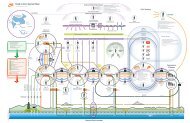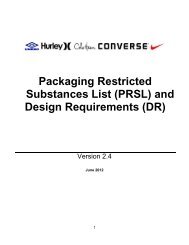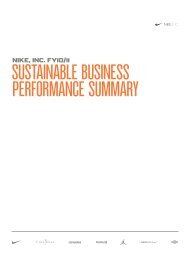COC CLS - Healthy Safety Environment - NIKE, Inc. - The Journey
COC CLS - Healthy Safety Environment - NIKE, Inc. - The Journey
COC CLS - Healthy Safety Environment - NIKE, Inc. - The Journey
You also want an ePaper? Increase the reach of your titles
YUMPU automatically turns print PDFs into web optimized ePapers that Google loves.
SOLID WASTE<br />
STANDARD<br />
<strong>The</strong> contractor must protect human health and the environment by meeting applicable regulatory<br />
requirements including air emissions, solid/hazardous waste and water discharge. <strong>The</strong> contractor<br />
adopts reasonable measures to mitigate negative operational impacts on the environment and strives<br />
to continuously improve environmental performance.<br />
‣ Develop and implement processes and procedures for the minimization and management of<br />
solid waste.<br />
RESPONSIBILITIES<br />
Location Manager must ensure that procedures for the minimization and management of solid waste<br />
are developed, implemented and followed.<br />
HSE Representative must establish, maintain and administer the processes and procedures for solid<br />
waste.<br />
Managers and Supervisors must ensure that employees receive training and comply with the<br />
requirements of the processes and procedures for solid waste.<br />
Employees must adhere to the requirements of the processes and procedures for solid waste.<br />
DEFINITIONS<br />
• Solid waste is discarded materials from the consumption of goods and services and the<br />
manufacture of goods. This definition does not include hazardous waste. Examples of solid waste<br />
include food and yard/garden waste, paper, cardboard, cloth, leather, product packaging, glass<br />
and metal containers.<br />
• Minimization is prevention and reduction of waste at the source. Reuse (using the product or<br />
material for the same or similar purpose); recovery (energy recovery from waste materials);<br />
recycling (using solid waste as material to manufacture a new product); and composting.<br />
REQUIREMENTS<br />
1. RISK ASSESSMENT—Each facility must have a documented annual risk assessment conducted for solid<br />
waste, which includes as a minimum:<br />
a. Identifying health, safety and environment hazards associated with handling, storage,<br />
transportation, and disposal of solid waste.<br />
b. Evaluating risk associated with hazards.<br />
c. Identifying control measures to reduce risk (e.g., segregation, personal protective equipment,<br />
minimization, etc.).<br />
d. <strong>The</strong> solid waste hierarchy to be followed:<br />
i. Source reduction<br />
ii. In-house recycling<br />
iii. Closed-loop recycling<br />
<strong>Environment</strong> <strong>CLS</strong> – Page 1 04.14.10



